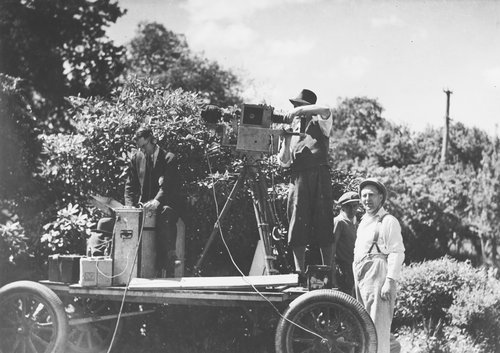
Hero image: Photograph taken on location on the Tairei Plains during filming of ‘Down On The Farm’. Left to right: Jack Welsh (Sound Unit) and Lee Hill (Camera) standing on the bed of a wagon, Hugh Duncan (Assistant) and Stewart Pitt (Associate Producer) standing on the ground. Ngā Taonga Sound & Vision, reference number S0419.
After the first feature length film with synchronised dialogue was released in 1927, it took a few more years for sound-on-film technology to fully take off in New Zealand.
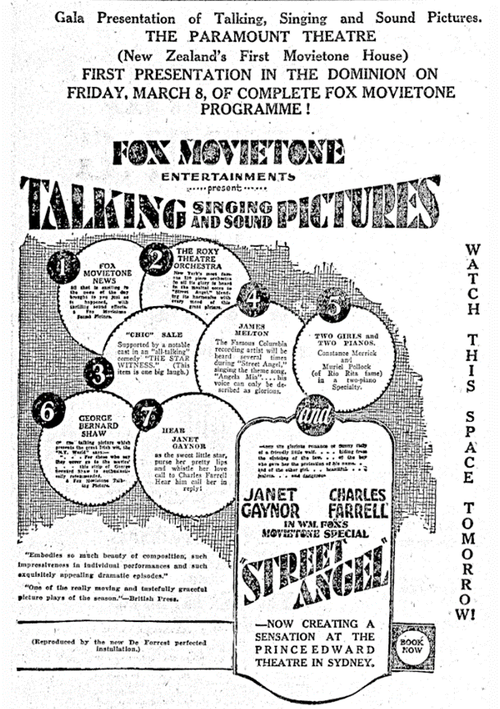
Advertisement for Street Angel at the Paramount Theatre.
Page 3 Advertisements Column 1. DOMINION, VOLUME 22, ISSUE 132, 28 FEBRUARY 1929, PAGE 3. Courtesy of Papers Past.
There had been previous attempts to add soundtracks to movies, mostly involving records that were played in the theatre at the same time as the film. For example, this experimental film made in 1895 shows two men dancing while a third plays violin into a large phonograph horn. But these early systems were novelties that never really caught on; it was very hard to perfectly synchronise recorded dialogue with a film in the cinema.
The innovation of sound-on-film was that sound waves were printed directly onto the film, ensuring that the audio and the pictures stayed in sync, even if the film got damaged and needed to be spliced. It made playing a film with a soundtrack much more practical than any of the older systems – as long as the cinema owner could afford the new playback technology. Audiences at the Paramount Theatre in Wellington were able to watch talkies from overseas as early as March 1929, but the inaccessibility of the new recording technology prevented anyone from making sound feature films here until 1935. Not only were sound films twice as expensive to make as silent ones, but the American studios that pioneered the technology had no interest in sharing their trade secrets. Sound-on-film systems weren’t readily available for purchase and details of how they were made were closely protected. Filmmakers outside of Hollywood who wanted to join the move to talkies had to invent their own versions of sound recording and playback technology first.
Given all this, it’s no surprise that it took New Zealand a few years to catch up and start making talkies. In 1929 filmmaker and projectionist Ted Coubray invented his own sound film system, called Coubray-Tone. Coubray-Tone was the first system of its kind in the whole of Australasia. He used it to capture nonfiction, like this 1930 newsreel footage, and several tests also survive. Early Coubray-Tone recordings in our archive include this film of Coubray’s assistant speaking and this film of a pair of musicians playing guitar, ukulele and harmonica.
Another filmmaker, Dunedin’s Jack Welsh, further developed Coubray's sound-on-film system. You can watch a test of the Welsh sound system here. It was Welsh who recorded the sound on the first two feature films with sound made in New Zealand, Down on the Farm (1935) and The Wagon and The Star (1936). Both are now considered lost films, of which only fragments have survived to the present day. You can watch the pieces held by Ngā Taonga at the links below.
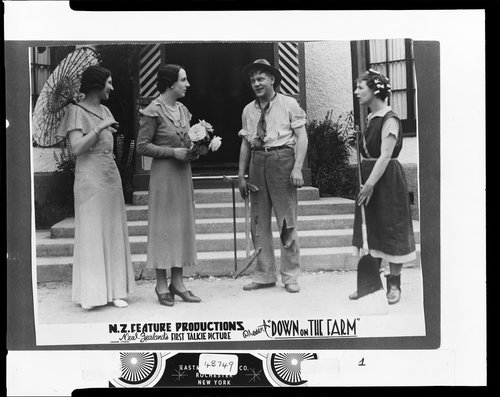
Down on the Farm
Black & white film still 4" x 5" cellulose acetate copy negative preservation master. Archives New Zealand item code: R24292968.
Down on the Farm (1935)
Down on the Farm was shot in Southland and Otago, with a mostly amateur cast from Dunedin. The premise seems to have been a simple one: two rival farmers have to put aside their differences when their children fall in love. It wasn’t exactly a polished production, and the few international reviews were scathing. "The dialogue is a joke, the acting amateurish and the photography poor. After this our colonial cousins will be well advised to restrict their exports to mutton,” wrote Britain’s Cine Weekly. It never gained an international release.

Advertisement for Down on the Farm
Page 9 Advertisements Column 2. OTAGO DAILY TIMES, ISSUE 22557, 29 APRIL 1935, PAGE 9. Courtesy of Papers Past.
New Zealand audiences also had plenty of other options if they wanted to see a talkie the week it came out. Advertisements on Papers Past for the week of May 2, 1935, show that they would have been tempted by Bright Eyes with Shirley Temple as well as Blood Money, The Woman I Stole, Madame Du Barry, We’re Rich Again, The Iron Duke and Advice to the Lovelorn – all overseas films made by real studios with big stars. Unfortunately, New Zealand’s first talkie wasn’t a success, even with “hundreds of head of cattle” and a “beautiful double wedding” to offer.
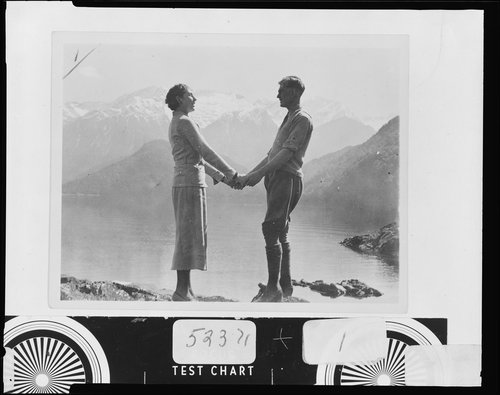
The Wagon and the Star
Black & white film still 4" x 5" cellulose acetate copy negative preservation master. Archives New Zealand item code: R24292958.
The Wagon and the Star (1936)
The Wagon and the Star was the second talkie made in New Zealand and seems to have been a bit better received than Down on the Farm. A review in Southland Daily News described the plot as follows: “A young man is down and out – without a penny and with very little hope. An older man shares with him his small store of cash and his unlimited optimism and dry humour. Thus equipped he sets out to conquer life – to hitch his wagon to a star.” Shot in Southland and Fiordland with actors from Invercargill, it featured two original songs, “Men of the Road” and “I’m Gonna Hitch my Wagon to a Star”. Another reviewer wrote that, “one is so apt to develop the habit of looking askance at New Zealand-made films that The Wagon and the Star does a good service in giving a wholesome lesson to the chronically sceptic.”
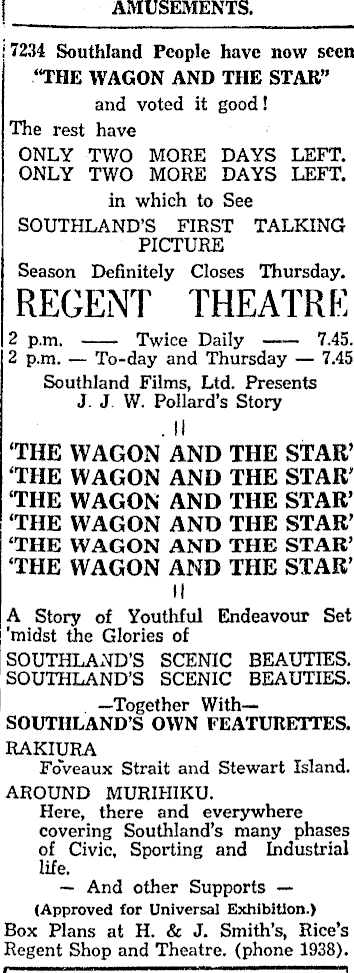
Advertisement for Down on the Farm
Page 1 Advertisements Column 5 SOUTHLAND TIMES, ISSUE 22948, 22 JULY 1936, PAGE 1. Courtesy ofPapers Past.
Down on the Farm and The Wagon and the Star are both considered lost films, of which only fragments have survived to the present day. The parts of the features, soundtracks and outtakes that do survive are now in our care, along with scripts, music scores, and interviews with cast members and directors. Some of the footage arrived at Ngā Taonga in the 1980s in a state of active decomposition, so we preserved it photochemically to safety film stock to save as much image as possible. We also stabilised as much as we could of the nitrate footage and intend to perform further digital preservation in the future. In the meantime, you can watch some of the pieces held by Ngā Taonga at the links below: